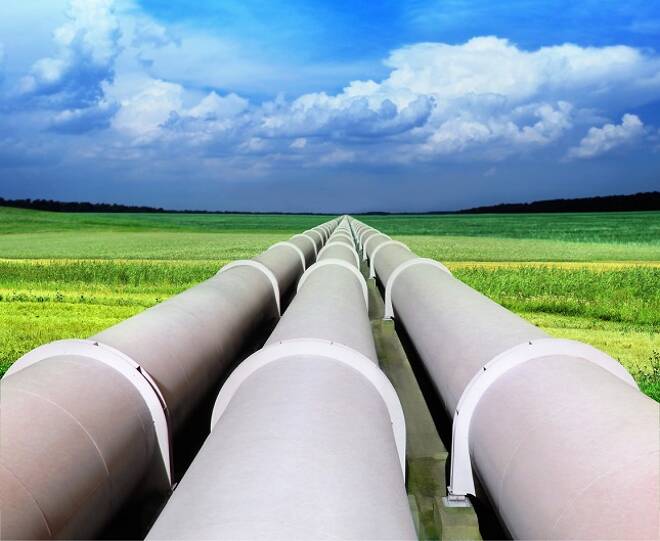Advertisement
Advertisement
Natural Gas Price Fundamental Weekly Forecast – Patience is Key for Bullish Traders at This Time
By:
Time is the biggest factor driving prices. There is no doubt we’re going to start the winter heating season with a deficit. However, the timing isn’t right yet for any aggressive buying. Furthermore, if you want to play a winter rally, you have to move out to the December to March futures contracts.
Natural gas futures finished sharply lower last week. The price action was driven by the notion that despite the supply deficit, cooler temperatures and rising production will help tighten the storage deficit before the winter season begins in November. Besides the cooler weather forecast and record production, traders also responded to the release of a government report that showed a bigger-than-expected storage build.
For the week, October Natural Gas futures settled at $2.776, down $0.140 or -4.80%.
The market is also trading on the weak side of several technical retracement zones. This is creating the downside momentum that could lead to a challenge of the next major support at $2.688.
Weekly Storage Report
According to the U.S. Energy Information Administration, U.S. natural gas in storage increased by 63 Bcf to 2.568 Tcf for the week-ended August 31. The build was slightly more than the consensus calling for a 60-Bcf addition.
The injection was also more than the 60-Bcf build reported during the corresponding week in 2017 but less than the five-year average addition of 65 Bcf, according to EIA data.
As a result, stocks were 643 Bcf, or 20%, less than the year-ago level of 3.211 Tcf, and 590 Bcf, or 19%, less than the five-year average of 3.158 Tcf.
Front month futures have fallen about 18 cents over the past two weeks despite low storage inventory. The move has been fueled by generally cooler temperatures and record production levels.
Forecast
Prices are likely to remain under pressure until all the long speculators have been driven out of the market. At that point, we’re likely to see a short-covering rally.
I don’t expect to see aggressive shorting on weakness because there still is a supply deficit. However, it’s also too early to start betting on a rally. Therefore, we’re likely to see a sideways to lower trade over the near-term unless hot weather return unexpectedly. Hurricanes in the Gulf of Mexico could play a role if they target natural gas platforms and facilities. But as we saw last week in the crude oil market, any spike higher in prices could end quickly once the situation is assessed.
According to Platts Analytics, even with slightly better builds over the next two weeks, they will still be below the five-year average and will further widen the deficit.
Platts is also saying it expects “storage to peak at approximately 3.3 Tcf before the switch to withdrawals in early November. If so, it would be the lowest level to start the heating season since 2005, when stocks peaked at 3.2 Tcf. A colder-than-normal winter could push up prices due to the low inventory despite production gains.”
Time is the biggest factor driving prices. There is no doubt we’re going to start the winter heating season with a deficit. However, the timing isn’t right yet for any aggressive buying. Furthermore, if you want to play a winter rally, you have to move out to the December to March futures contracts.
About the Author
James Hyerczykauthor
James is a Florida-based technical analyst, market researcher, educator and trader with 35+ years of experience. He is an expert in the area of patterns, price and time analysis as it applies to futures, Forex, and stocks.
Did you find this article useful?
Latest news and analysis
Advertisement
